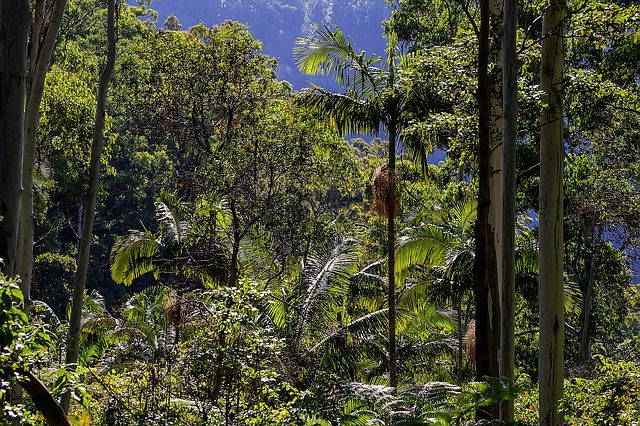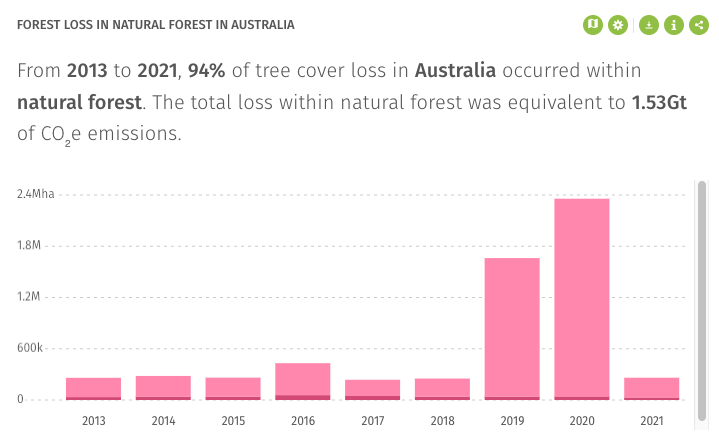
Australia Deforestation Rates & Statistics
Australia is home to some of the world’s most unique and diverse plant and animal life. However, this remarkable natural heritage is under threat from deforestation. Each year, an estimated 1,600 square kilometers of forest is cleared in Australia – that’s an area the size of Rhode Island. The primary cause of this deforestation is conversion to pasture for livestock grazing. Other causes include urban expansion, mining, and agriculture. The consequences of these activities are profound. Deforestation contributes to climate change, loss of habitat for native plants and animals, and soil erosion. It also decreases the amount of carbon dioxide that trees can absorb, exacerbating the effects of global warming. In order to protect Australia’s unique environment, it is essential to reduce the rate of deforestation. This can be done through better management of existing pastureland, greater investment in sustainable forestry practices, and increased protection for native forests.
Deforestation Rates
Australia is home to a variety of unique plant and animal species. Unfortunately, the country’s natural forests are under threat from deforestation. In 2010, Australia had 38.0 million hectares of natural forest, extending over 5.1% of its land area. However, by 2021, the country had lost 231,000 hectares of natural forest, equivalent to 90.5 million tonnes of CO₂ emissions. Deforestation can have a devastating impact on local ecosystems, as well as the global climate. Therefore, it is important to take measures to protect Australia’s remaining forests.

Primary Forest loss in Australia
Australia lost 62ha of humid primary forest from 2002 to 2021, making up 0.1% of its total tree cover loss in the same period. The total area of humid primary Forests in Australia decreased by 0.49% in this period.
Since 2001, Australia has lost 8.73 million hectares of tree cover, equivalent to a 21% decrease in tree cover since 2000. This loss of tree cover has resulted in 2.34 gigatons of carbon dioxide equivalent emissions.
Deforestation alerts in Australia
Between the 6th and 13th of November, there were a total of 3,949 deforestation alerts reported in Australia. These alerts covered a total of 48ha, and none of them were high-confidence alerts that were detected by a single system. In addition, none of the alerts were detected by multiple systems. This means that the deforestation activity was relatively small-scale and not necessarily indicative of a larger trend.
Forest loss in natural forests in Australia
Tree cover loss has been a significant issue in Australia for many years. In fact, from 2013 to 2021, an estimated 94% of all tree cover loss occurred within natural forests. This is equivalent to approximately 1.53 billion tonnes of carbon dioxide emissions. The main drivers of tree cover loss in Australia are forestry operations, land clearing for agriculture, and bushfires.

Location of tree cover loss in Australia
In Australia, tree cover loss is most prevalent in the states of New South Wales and Western Australia. Together, these two states are responsible for 59% of all tree cover loss between 2001 and 2021. In particular, New South Wales has lost an average of 2.99 million hectares of tree cover during this time period, which is significantly higher than the 970-thousand-hectare national average. Western Australia also fares poorly in terms of tree cover loss, with an average of 2.19Mha lost each year.
Conclusion
Australia is home to some of the world’s most unique and beautiful ecosystems. However, these are under threat by deforestation. The loss of primary forests in Australia has increased steadily over the past few years and shows no signs of stopping. Deforestation alerts have been issued for several areas in Australia, warning people about the dangers posed to these ecosystems. If you care about preserving Australia’s natural heritage, it’s important to be aware of where tree cover loss is occurring and what you can do to help stop it.
Reference: